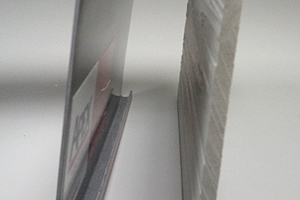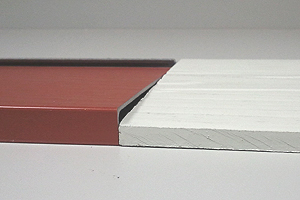Comparing the price of fiber cement siding to fiberglass siding requires understanding the benefits of both.

Fiber cement siding came into the Minneapolis St. Paul market more than 15 years ago as an alternative to cedar wood siding and masonite. It has taken hold given that it’s more durable and longer lasting than those and is comparable in price.
Given that advantage, fiber cement siding has become the most used high-end siding in the Twin Cities market.
But it now has an emerging competitor, fiberglass siding from Apex. While the Apex fiberglass siding system currently costs more versus fiber cement siding, there are financial and maintenance advantages to fiberglass siding that could be considered well worth the investment.
Take the finish for fiber cement and fiberglass siding:
- Fiber cement siding planks come with a factory finish or primed and ready for on-site painting. The decision on the finish and paint used can affect the end price of fiber cement siding as well as its durability.
- Fiberglass siding has the color bonded into the material during manufacturing, not applied on the finished product. This means no painting decisions and no added cost.

There’s also on-site handling:
- Chipping and splintering during delivery and on-site handling occurs with fiber cement siding, requiring paint touch ups that can lead to uneven fading requiring future maintenance.
- Fiberglass siding is stronger and harder than fiber cement, making on-site splintering and chipping far less common. At one-third the weight it is also easier to handle on site and less vulnerable to damage.
And requirements to protect the home from water:
- Fiber cement siding requires use of caulk to keep water from entering the home, particularly around doors and windows. Caulk is difficult to color match and become brittle over time, possibly exposing the house to moisture without ongoing maintenance.
- Fiberglass is water resistant on its own, and the Apex fiberglass siding system requires no caulk.
- A fiber cement siding installation can include a drainage plan to further protect the home from water damage, but it isn’t standard and comes at an additional cost.
- Apex fiberglass siding uses a unique clip instillation system that forces any water that does get behind the siding to flow down and away from the house.
On an upfront basis the cost of Apex fiberglass siding can be approximately 25% higher than fiber cement siding, but the combination of additional costs from fiber cement siding may close that gap.
Those fiber cement upgrade costs — bring the quality on par with fiberglass — include:
- Using higher quality paint and application methods, including caulk.
- Maximizing protection from water damage to a home.
- Future maintenance for upkeep of caulk and paint.
- Custom design to meet appearance expectations.
For homeowners interested in learning more about the value provided fiber cement and the Apex fiberglass siding system can contact AMEK Custom Builders at 952-888-1200.